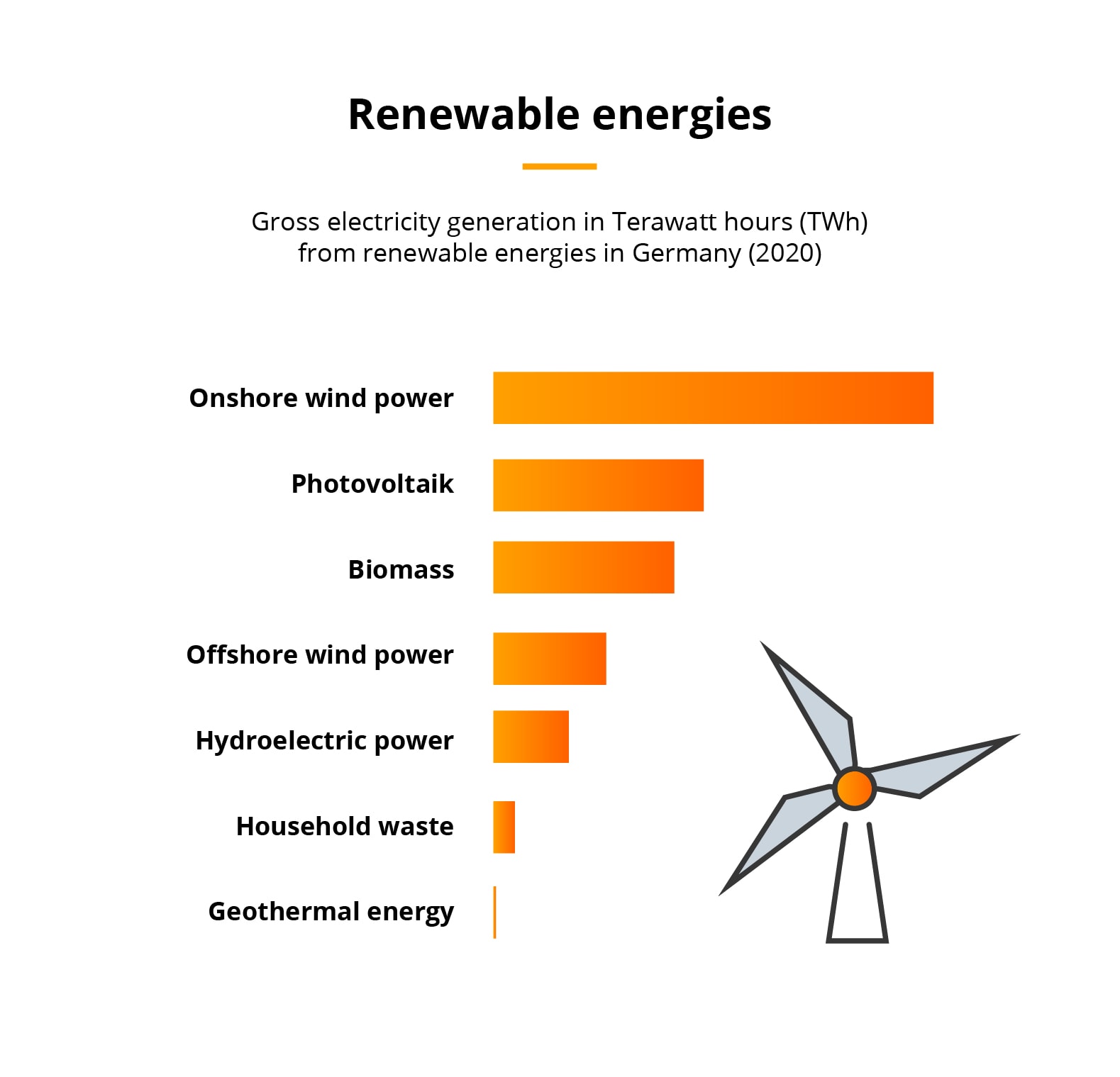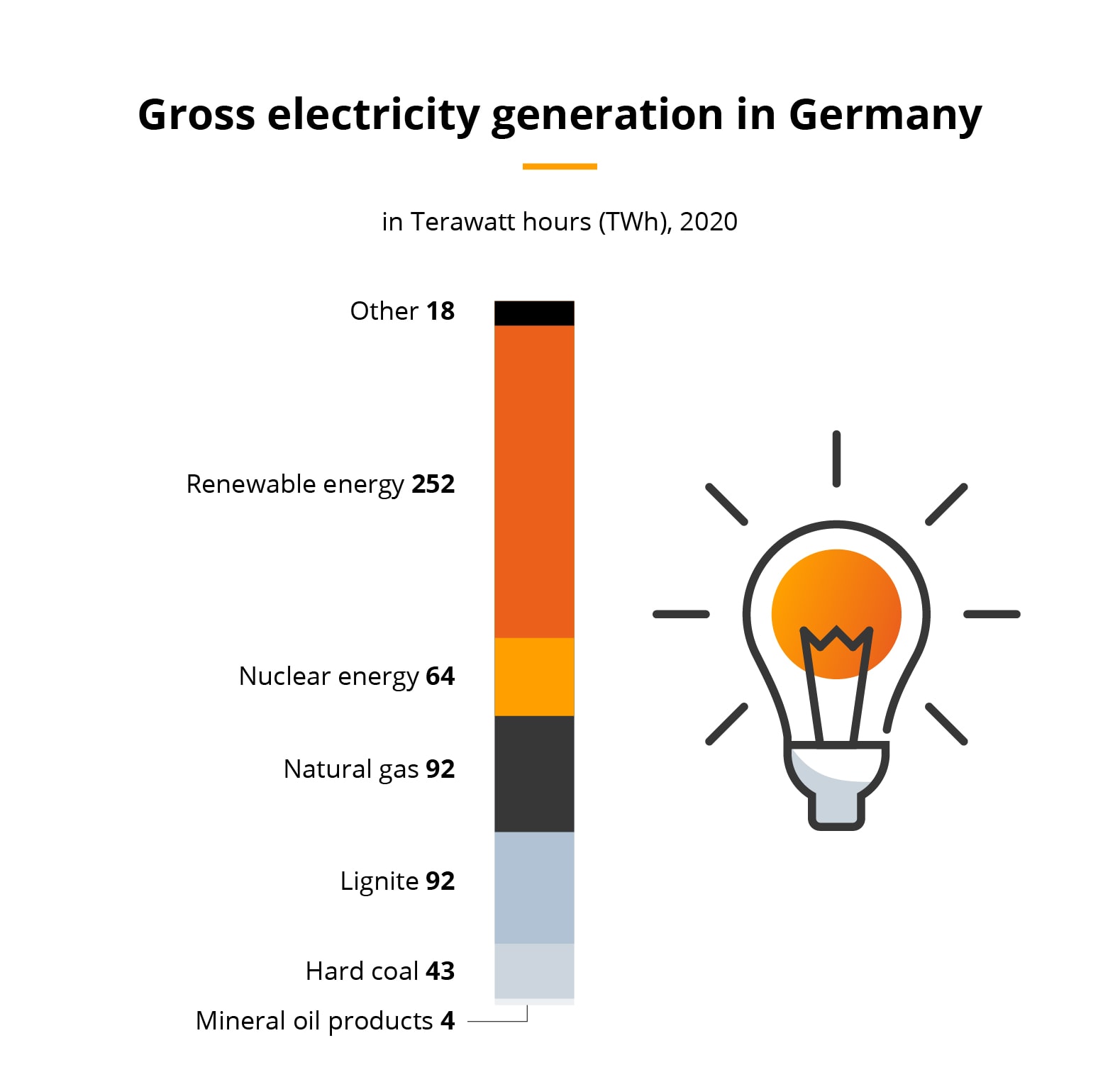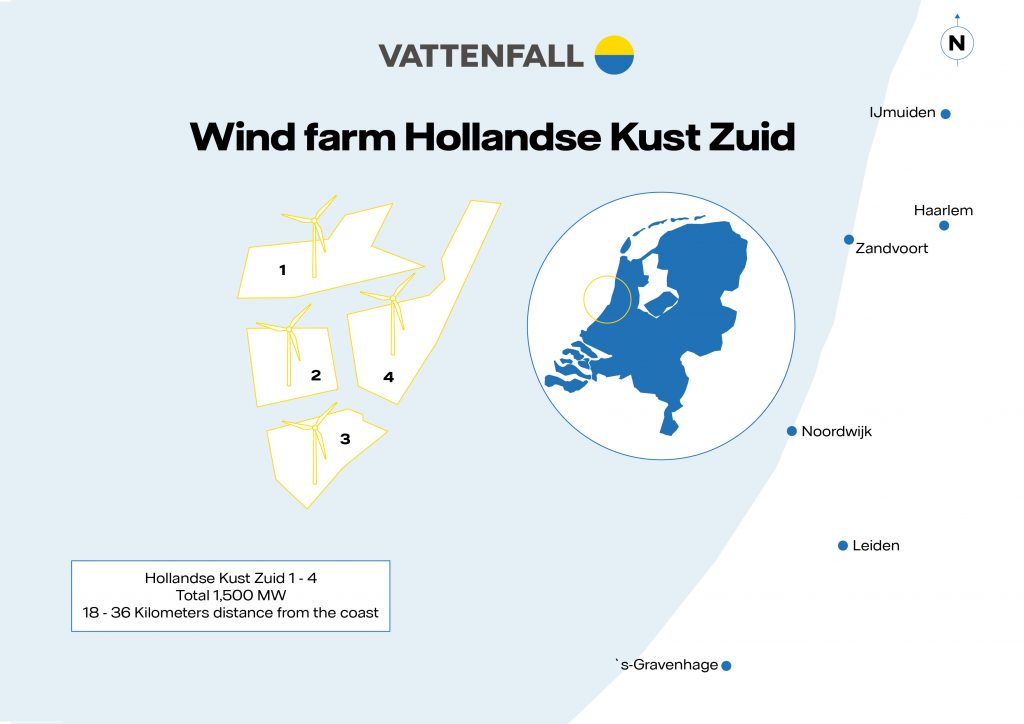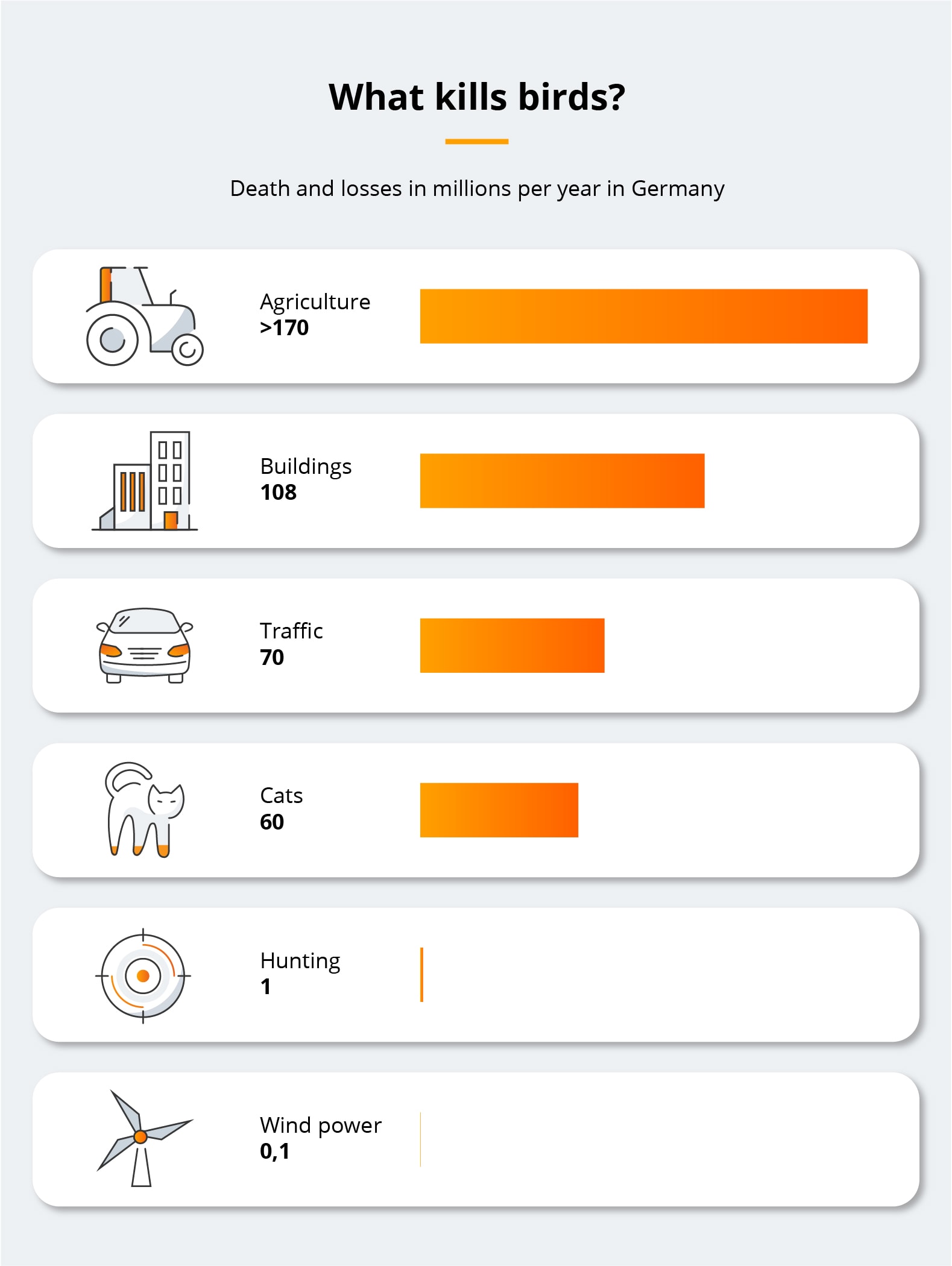
The transformation of the energy industry
In this article, we are going to take a closer look at the energy transition in Germany (and a brief look at some other countries as well), including: what has already been done, what plans for the future look like, and how the IT industry can support these changes.
Renewable energy is to be defined as a matter of German national security, making it a safer alternative to fuel supply chains that can be intentionally or naturally disrupted. The other benefit is the fact that any source of energy may not, by any means, be a danger to public safety or human health. However, these plans must be combined with advanced technology in order to make the most of it.
The scientific evidence is unequivocal: climate change is a threat to human wellbeing and the health of the planet. Any further delay in concerted global action will miss a brief and rapidly closing window to secure a liveable future.Prof Dr. Hans-Otto PörtnerThe Intergovernmental Panel on Climate Change
This report is a dire warning about the consequences of inaction. It shows that climate change is a grave and mounting threat to our wellbeing and a healthy planet. Our actions today will shape how people adapt and nature responds to increasing climate risks.Dr. Hoesung LeeChair of the Intergovernmental Panel on Climate Change
Although the political situation in Germany has changed – Christian Democrats (CDU) have been replaced by centre-left Social Democrats (SPD) as the biggest fraction in the Parliament – the latter group has decided to stick with the same policy as its predecessors, with the main goal of becoming climate-neutral by 2045. SPD also wants to have all electricity come from renewable sources by 2040.
Together with Bündnis 90 (Die Grüne – the Greens) and Free Democratic Party (FDP), they have discussed a coal exit by 2030 (which means driving out coal as a source of power generation and closing down all of the 63 remaining coal-fired power stations). Also, following the plans that were initiated by the previous government, SPD remains firm on a nuclear phase-out. After shutting down three nuclear power plants in 2021, there are only three left in Germany as of 2022.
Energy transition: How much electricity does Germany need?
In the medium term, Germany wants to become climate-neutral. The only question is: how big does the expansion of renewable energies have to be? That depends on how much electricity will be needed in the future.
Germany wants to do more for the climate. After the judgment of the Federal Constitutional Court in March, the federal government announced that by 2030 CO2 emissions should fall by 65 percent compared to the 1990 level and not – as previously planned – by 55 percent. This requires more electricity from renewable energy sources than previously planned.
The goal sounds promising at first, but the devil is in the details. Because depending on how high the electricity consumption is estimated for 2030, there are quite different dimensions in which wind and solar power plants have to be expanded in order to achieve the 65 percent target.
In 2018 the overall energy consumption in Germany was around 3 640 TWh while the electricity was just around 590 TWh.
When it comes to 2021 The Federal Ministry of Economics (BMWi) has assumed that electricity consumption was then on the level of about 645 to 665 TWh. “In the last ten to 20 years, power consumption has been relatively constant,” says Johannes Wagner from the Energy Economics Institute at the University of Cologne (EWI). “We had gross electricity consumption of around 600 terawatt-hours over a long period of time. It only fell relatively sharply in 2020 due to special effects caused by Corona.”
Will we need more electricity in 2030?
But what applied in the past does not apply to the future. Various experts assume that the federal government’s previous planning is too conservative. Even SPD chancellor Olaf Scholz recently indirectly criticized his fellow minister Peter Altmaier (CDU): “Anyone who claims that electricity consumption will remain the same until 2030 is lying to themselves and the country.”
So what if the electricity consumption does not stay the same at all, but increases? Maybe even rising sharply? This is the scenario that various energy experts are assuming.
The expert commission for monitoring the energy transition, to which I belong, has estimated a value for electricity consumption that is significantly higher than that of the federal government. We are moving around a value of 650 TWh and are therefore still at the lower end of the spectrum.Prof. Dr. Veronika GrimmProfessor of Economic Theory at Friedrich-Alexander-Universität Erlangen-Nürnberg
The Agora Energiewende think tank also estimates electricity consumption in 2030 at 650 TWh. The EWI calculates that 685 TWh will be consumed in nine years. The Federal Association of Renewable Energies (BEE) is assuming 745 TWh in 2030 and the Fraunhofer Institute for Solar Energy Systems (ISE) is even anticipating electricity consumption of 780 TWh in 2030. That is 70 to 200 TWh more than the Ministry of Economics predicts.
E-cars, heat pumps and electrolysers consume electricity
According to the experts, more energy is needed mainly because traffic has to be switched to e-mobility and buildings have to be heated differently, for example with heat pumps, which in turn need electricity. In addition, the industry will turn away from fossil fuels and will have to switch to synthetic fuels, i.e. hydrogen. The production of green hydrogen (electrolysis) also requires large amounts of electricity.
“The federal government’s goal alone of creating electrolysis capacities of five gigawatts by 2030 brings with it a very considerable additional electricity requirement. You have to estimate around 20 additional terawatt-hours of electricity for this,” says Grimm. This corresponds to more than a sixth of all electricity produced from wind energy in 2020.
Hydrogen Electrolysis P2G
Veronika Grimm: “If you want the hydrogen economy to ramp up quickly and the technology to be developed quickly and competently, then you should be quite pragmatic in the transition, allow many colours of hydrogen and then switch to green hydrogen when it is widely available.”
More energy efficiency is not enough
So more power will be consumed. On the other hand, there are of course also efficiency gains that reduce power consumption. In this area, the federal government had set itself the goal of reducing electricity consumption by ten percent by 2020 and by 25 percent by 2050 compared to 2008 through greater energy efficiency. However, according to energy experts, these efficiency gains cannot compensate for the additional demand for electricity.
For example, the BEE says: Classic power consumption will decrease by 48 TWh due to the very ambitious efficiency targets.
In addition, Agora Energiewende criticizes that large, economically highly profitable efficiency potentials have not yet been systematically exploited, although market-ready technologies are already available today. “The reduction in power consumption has so far fallen well short of our ambitions.”
How big does the expansion of renewable energies have to be?
How many new wind turbines and photovoltaic systems Germany needs depends on how the hunger for electricity develops. Based on the relatively low electricity estimate by Agora Energiewende, Germany would have to expand around ten gigawatts of photovoltaics, 1.7 gigawatts of onshore wind, and four to five gigawatts of offshore wind annually by 2030. “This is roughly comparable to what we had in the past few years in the record expansion years,” says Mara Kleiner from the Agora Energiewende. “So doable.”
Expert Veronika Grimm agrees that it will be quite challenging and a lot of levers will have to be set in motion in order to push the expansion of renewable energies significantly. Especially when it comes to wind energy on land, there are repeated protests from local residents. “That’s why we have to concentrate even more on offshore expansion,” says Grimm. Although that is not unproblematic, new power lines have to be built through Germany, which also meet with resistance.
Planned power lines that connect the windy north with the energy-hungry south of Germany are met with a lot of resistance.
The energy transition can only work together
And it probably won’t work alone. “Germany is currently exporting electricity abroad,” says Wagner from EWI, “in the medium term it must be expected that Germany will initially become a net importer.” The example of industry already shows that. Grimm believes that the production of green hydrogen cannot be ramped up quickly enough here. “We have to prepare for the import of green hydrogen at the same time,” says Grimm.
So on there are advanced works on hydrogen, produced from natural gas, whereby the CO2 emissions are planned to be captured and stored.
Beginning of the solar age
Upheaval
Photovoltaics already generate the cheapest electricity in most parts of the world. Generation with large-scale plants in sunny regions like here in Mexico is particularly inexpensive. Solar systems are therefore increasingly being built. The power supply is changing fundamentally worldwide.
Space almost everywhere
Solar systems can be set up almost anywhere: deserts, barren areas, excavator holes, roofs and bodies of water are particularly suitable. In Switzerland, the modules are located on an alpine reservoir. Currently, three percent of the global electricity demand is covered by photovoltaics.
Dual-use
Another trend is Agri-solar: solar modules on top and space for agriculture below. Here in China it’s a poultry farm. The shade is particularly suitable in very sunny regions: it makes agriculture possible in deserts.
Inexpensive own electricity
Modules make sense on almost every roof in the world. The electricity is used directly on-site and fewer power lines are required. In Germany, solar power from the roof now costs less than a third compared to power from the grid.
Production with a future
The energy-intensive industry now also wants cheap solar power. One example is the chemical giant Bayer. The factories in Spain are now to be supplied with 100 percent green electricity, primarily with solar power. It’s good for the image and makes investors happy. Investors prefer climate-friendly companies.
Departure into the solar age
Shaded parking and electricity for the supermarket. Here in southern Spain, the combination is appreciated and has been practised for a long time. The first solar boom started in Spain 10 years ago. Now the second follows, and at the same time, the switch to electromobility begins. Driving with electricity is also becoming increasingly cheaper and is fuelling the move away from the combustion engine.
Batteries are accelerating the trend
The solar park in Germany has large battery storage in the containers. Fluctuations in generation and consumption can be balanced out and there is electricity for the night. Batteries are also becoming cheaper, and experts are expecting a global breakthrough for solar battery power plants from 2025. Coal, oil, and gas power plants will then be even more crowded out. Another interesting plant is the hybrid energy park in Haringvliet. It integrates wind and solar plants and energy storage.
Finally power
Around 770 million people worldwide live without access to electricity, especially in large parts of Africa and some countries in South Asia and South America. But this is increasingly changing. Since 2016, around 250 million people have had electricity for the first time thanks to photovoltaics. With batteries and light bulbs there is light for the evening. In Bangladesh, more than four million houses have electricity.
China shows the way
Solar power used to be expensive. Today it costs only one-tenth compared to 2010 and the costs are falling by 5 to 10 percent per year. That makes the energy very cheap. China in particular has recognized the opportunities. The largest factory there will produce solar panels with an output of 60 gigawatts per year from 2023. For comparison: A modern nuclear power plant has an output of one gigawatt.
A bright future for offshore wind plants
The future of offshore wind plants looks very bright because they are so efficient. Did you know that an offshore wind park produces three times more energy than an onshore wind park of comparable size? It can even be as powerful as a nuclear power plant, and not reliant on fossil fuels.
In order to get an idea of the size of this energy sector, it’s enough to look at 4coffshore.com map, which presents an overview of offshore wind parks. The map shows all of the wind farms that have either been planned, are under construction or are already in operation.
One of the biggest and most recent investments in offshore wind energy is Hollandse Kust Zuid – a new wind farm that is being constructed by Vattenfall in the North Sea. The interesting thing here is that this farm has not received any financial support from the government, meaning that it will be the first wind power plant in Europe that is totally subsidy-free.
This is only possible due to significant drops in the costs of offshore wind energy over the last few years. And even though they have been granted permission to install 252 wind turbines with a minimum capacity of 6MW, they will only deploy 140 powerful 11MW wind turbines, which shows that the technology is developing really fast. This is especially worth consideration when you are looking at such long development timelines.
There are, of course, some environmental concerns associated with offshore wind development, such as the underwater noise that is generated during construction (which can be mitigated by, e.g., double or triple bubble curtains, Marine Mammal Observers, Passive Acoustic Monitoring, etc.), changing the behaviour of sea animals, or the risk of birds getting stuck in the blades – although the numbers don’t look as bad as some people like to think:
Plus, developers are doing a lot to drive the impact even further down. For example, painting one blade black seems to help reduce the number of bird victims.
Furthermore, offshore wind farms have very little negative effect on global warming and the underwater installations even act like artificial reefs in some cases, so they may also contribute greatly to sea and ocean life by offering a new habitat for different species. Also, wind-generated power is carbon-neutral and can be utilised in climate-friendly hydrogen, kerosene, and diesel production.
What has already been done in technology in terms of renewable energy?
Although the possibilities for tech companies are endless when it comes to the renewable energy sector, there’s a lot that has already been done in this area. Just look at the examples below.
Automation
There are remotely operated uncrewed surface vessels (USVs) inspecting offshore wind plants. Data acquisition is done remotely which significantly reduces the production of CO2 – a boat runs on battery, so its environmental footprint is close to zero.
But even though a decreasing number of people are engaged in on-site investigation and more robotics and automation are involved, USV-based solutions also create new job opportunities. For example, the Autonomous Remote Offshore Wind Inspection, Navigation and Deployment (AROWIND) Project – which recently got a $3 million boost from Canada’s Ocean Supercluster – is expected to create around 330 new jobs (55 jobs directly and 275 indirectly).
Data
Machine learning makes renewable energy more predictable, reliable and viable. Algorithms created to identify patterns from data are widely used for forecasting: predicting energy consumption levels and weather conditions, detecting potential problems, and understanding market trends. This all helps organisations adjust their modus operandi to external factors, avoiding costly downtime, wasting less resources and increasing customer satisfaction.
Software
When it comes to software, there are at least five kinds of solutions that are worth mentioning in terms of renewable energy.
- Operation centres – core platforms developed to centralise information, optimise processes and facilitate the management of any given renewable energy power plants.
- Digital twins – advanced data-driven analytical models that serve as virtual representations of wind farms or photovoltaic plants, etc., often designed to enhance security, boost performance or identify potential issues – everything for lifetime extension.
- Preventive monitoring – software-based models can monitor, analyse and examine, for example, wind turbines (taking into account both design and wind conditions), in order to calculate their remaining time and give specific instructions on the steps that must be taken to extend their lifetime.
- Software calculations – used for simulations that are needed to optimise energy systems and for better management.
- Ground modelling – for merging different data sets in order to capture variations in ground conditions and providing geotechnical information required for designing, deploying and maintaining both onshore and offshore installations.
What has to be done by the IT industry to act sustainable regarding energy consumption?
Energy consumption in IT raised by 1000% since 2010. “The demand for computing power in the centers has increased tenfold since 2010,” says researcher Ralph Hintemann from the Borderstep Institute for Innovation and Sustainability in Berlin. Although the IT technology used has become significantly more efficient, the growing demand for computing power is leading to significantly higher energy requirements overall. It is now 60 percent larger than it was in 2010.
Software and sustainability – how do that fit together?
According to studies by the University of Cambridge, the Bitcoin network consumes over 100 terawatt-hours of electrical energy per year (as of October 2021). This corresponds to about one-fifth of the electricity consumption in Germany. This is an extreme but at the same time powerful example of the fact that inefficiently designed software contributes to the problem of excessive global electricity consumption.
There is also a need for optimization when it comes to AI and machine learning: An exemplary training of a transformer model for natural language processing consumed more than 650,000 kWh of energy and thus produces as much CO2 as 5 cars with combustion engines including fuel over their entire life cycle.
The problem is exacerbated by the fact that the computing times used to train the models have experienced an exponential increase in recent years and have increased more than 300,000 times since 2012.
According to the Bitkom industry association, German data centers consumed 16 TWh in 2020. That is significantly more than the electricity consumption of the city of Berlin in the same year. Last but not least, this would jeopardize climate goals, says researcher Hintemann.
But we should be honest. This challenge can only be solved globally. Because cloud computing knows no national borders. It is therefore necessary to introduce global standards that force the large cloud providers to work with green electricity. After all, it would be fatal if an arithmetic operation triggered in Germany increased CO2 emissions in China or Brazil
Energy storage – a problem for governments and a huge opportunity for tech companies
Energy storage plays a key role in the security of supply and the transition towards a carbon-neutral economy. While nuclear power plants produce energy all the time, sun and wind farms do not. This creates a huge challenge. Renewable energy has to be generated whenever possible, stored all the time, and easily transported when needed.
Scientists and engineers need to find many ways to store energy, while software companies have the opportunity to show off here by providing solutions to manage storage processes. One of the initiatives for capturing and storing energy for later use is by utilising batteries from electric vehicles (e.g., Volkswagen is thinking about using cars for energy storage). Tesla is ready to do this as well (and they also offer Powerwall – an integrated battery system for storing solar energy).
In 13 years, one can expect 40 million EVs (electric vehicles) in Germany with a mean battery capacity of 50 kWh. If smart grids would have access to 100% of the overall EV battery storage, this would make nationwide energy storage of 2 TWh = 2.000.000.000.000 Wh.
The Fraunhofer Institut für Solare Energiesysteme (ISE) estimated a yearly requirement in 2035 of electrical energy per year in Germany at 800 TWh. This is around 2,2 TWh per day. That means, only the cars in Germany would already provide energy storage capacities of 70% of the needed Energy.
Does this sound unbelievable? Well, as President John F. Kennedy said, “we choose to go to the moon in this decade and do the other things, not because they are easy, but because they are hard”. This also might have sounded too difficult to achieve at the time, yet they really did it.
A few more interesting things to think about…
The renewable energy industry is so complex and fascinating that one could write some very thick books about it, but I will stop right here. However, there are many more interesting topics to consider and read about, such as:
- How to build wind farms without interfering with animal migration patterns and habitats?
- How to reduce underwater noise? Are bubble curtains enough?
- What do negotiations with different governments look like? What are the main political challenges?
- Which lands should be used for solar and wind farms?
- How to crowdfund a renewable energy project?
Conclusion
To sum it up in a few points, I can say that:
- The renewable energy industry is becoming more meaningful in terms of national security — and not only for Germany.
- Net-zero emissions can be reached by developed countries within 20-30 years.
- Even nuclear power plants are not needed for the security of energy supply.
- Electricity consumption is going to increase due to the use of e-cars and heat pumps, etc.
- Many more wind farms (especially offshore) and solar power plants will be constructed in the years to come. Plus, there are more Sustainable Development Goals (SDGs) that are supposed to be reached by 2030.
Tech companies have a huge opportunity here to come up with software solutions regarding energy management, transfer, and storage, as well as infrastructure maintenance and accurate forecasting, etc. If you’re one of these tech companies – now is your last chance to get on track and start investigating this topic in order to see how you can contribute.
And if you’re responsible for developing a company in the renewable energy sector that needs a good software solution and is now looking for an IT partner to run this project together – please contact us as soon as possible, so we can figure out how we can help you.
___________________________
SPECIAL CONTRIBUTION
The article was written with contribution from Volker Tertel, an offshore wind farm professional.








